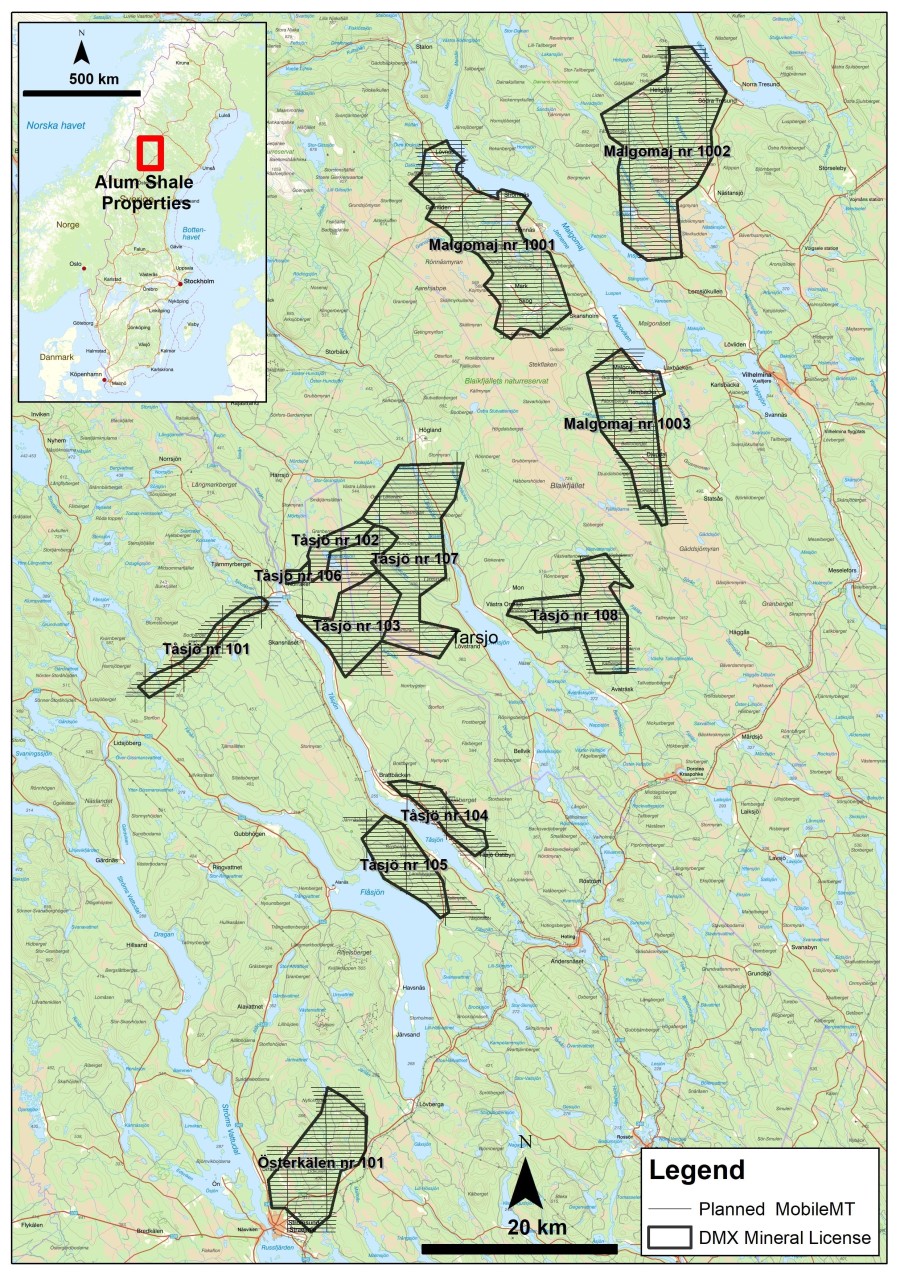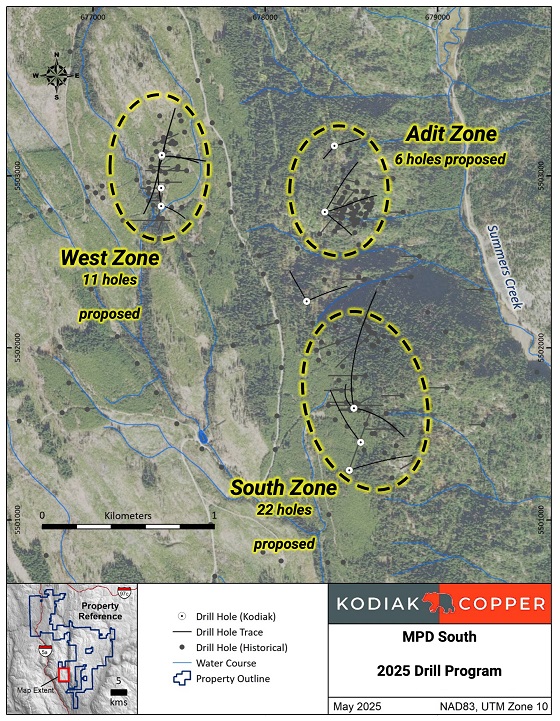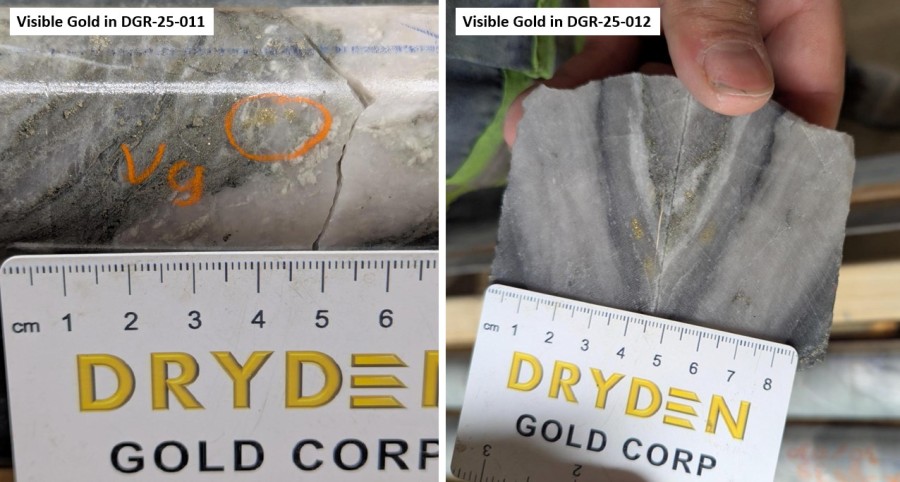TheNewswire / November 1, 2016 - Assays from the first two step-out holes at the Castelo de Sonhos gold project of TriStar Gold Inc. (the "Company" or "TriStar") have been received and confirm that gold mineralization extends well beyond the current resource area.
Table 1 below shows the significant intervals for CSH-16-144, for which all assays have now been received from the lab, and for the top half of CSH-16-145. The samples from the bottom of this hole are being shipped to the laboratory this week, with results expected before the end of November.
| Hole ID | Thickness and gold grade | Downhole depth |
| CSH-16-144 (225 m total depth) | 3.10 m @ 3.90 g/t (including 1.35 m @ 8.04 g/t) |
121.80 - 124.90 m |
| CSH-16-145 (239 m of 347 m total depth) | 3.90 m @ 0.70 g/t 1.85 m @ 1.10 g/t 2.00 m @ 4.96 g/t |
12.70 - 16.60 m 163.40 - 165.25 m 177.20 - 179.20 m |
| Esperanca South historical average | 4.14 m @ 2.43 g/t |
Table 1. Significant gold intervals in CSH-16-144 and top half of CSH-16-145. Both drill holes were drilled towards an azimuth of 140 degrees, with a dip of 55 degrees. The downhole intersections are approximately true width of the mineralization.
Mr. Nick Appleyard, TriStar's President and CEO, commented: "Based on what we were seeing last month as we drilled these holes, we felt confident that the new drilling was supporting our geological assumptions. It's great to have the first assay data, and to have direct measurements of the thickness and grade of mineralized bands similar to what has been seen in the adjacent resource area. We've got several more holes to go on that southwestern extension, supported by both gold-in-soil geochemistry and the presence of historical informal mine workings."
For the Esperanca South area, previous drill hole intervals with significant gold mineralization were reported in the 2014 Technical Report, a total of 116 intervals in 69 drill holes, with most holes showing one or two intervals. These intervals ranged in thickness from 1 to 29 metres, with an average slightly over 4 metres; their grades ranged from 0.6 to 16.8 g/t, with an uncut average of 2.4 g/t.
As shown in Figures 1 and 2, resources reported in the 2014 NI 43-101 Technical Report were restricted to the drill holes available at that time. With 16 km of outcrop showing a strong soil anomaly, only 4 km of which had been drilled, TriStar recognized the potential for considerable additional resources. In March 2016, TriStar filed a new 43-101 Technical Report on a quantitative risk assessment (QRA) that integrated all available data and information on the deposit into a calculation of the project's Exploration Target Range. This QRA involved several assumptions that are now being tested by diamond drilling. The principal assumption is that gold mineralization occurs throughout the band of conglomerates that host the majority of the mineralization, i.e. that gold mineralization continues along strike from where it has been previously encountered in drill holes, and that it continues down dip from where it appears in surface trenches and in the workings left behind by small-scale informal miners.
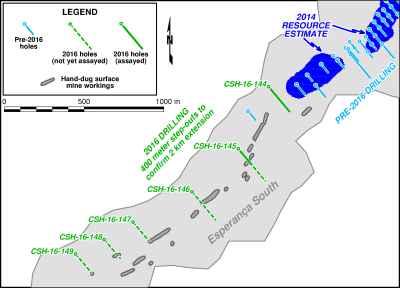
Figure 1. The southwestern limb of the Castelo de Sonhos deposit, showing the footprint of the 2014 resource estimate in blue, pre-2016 drill holes in light blue, and new drill holes in green.
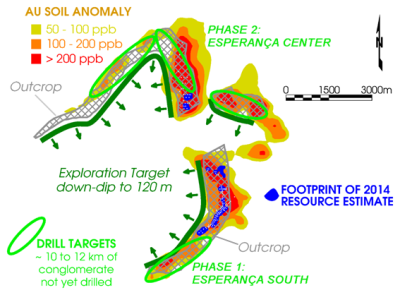
Figure 2. Castelo de Sonhos project with the conglomerate outcrop, geochemical soil anomaly, footprint of 2014 resource estimate, and 2016 drill targets.
Even with half of CSH-16-145 remaining to be assayed, it is already clear that the mineralized bands encountered in the resource area do continue to the southwest, at least 600m beyond the 2014 reported resources. This supports and potentially exceeds the quantitative risk assessment, which assumed that mineralization would continue but weaken in this direction as it became further from the original source rocks whose erosion fed the paleo-placer.
Four of the six drill holes planned for Esperanca South were completed in October; these holes will be logged in detail, photographed and samples will be sent for assaying in the coming weeks. In November, the drill rigs will move to the northern end of Esperanca Center (see Figure 2), to test extensions of the conglomerate band beyond the resources previously reported in this area of the deposit.
Sample analysis procedures and QA/QC protocols
Sample preparation and analytical work for the Castelo de Sonhos drilling program were carried out by SGS Geosol in Parauapebas, Para State (sample preparation) and Belo Horizonte, Minas Gerais (analysis), an ISO 9001:2008 and 14001:2004 certified laboratory which employs industry-standard analytical methods. As part of TriStar?s QA/QC protocol, standard samples and blanks were inserted into the sample processing stream at a rate of one per 10 samples. Duplicate and alternate laboratory check samples also form part of this sampling protocol.
TriStar's Vice-President, R. Mohan Srivastava (P.Geo.), is the QP for this press release and has prepared or supervised the preparation of the scientific or technical information in this press release.
About TriStar:
TriStar Gold is an exploration and development company focused on precious metals properties in the Americas that have potential to become significant producing mines. The Company's current flagship property is Castelo de Sonhos in Para State, Brazil. The Company's shares are listed on the TSX Venture Exchange under the symbol TSG. Further information is available at www.tristargold.com.
Copyright (c) 2016 TheNewswire - All rights reserved.


